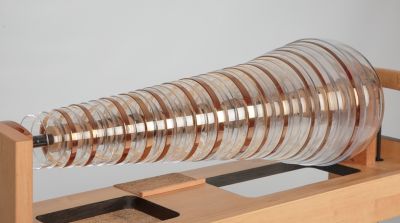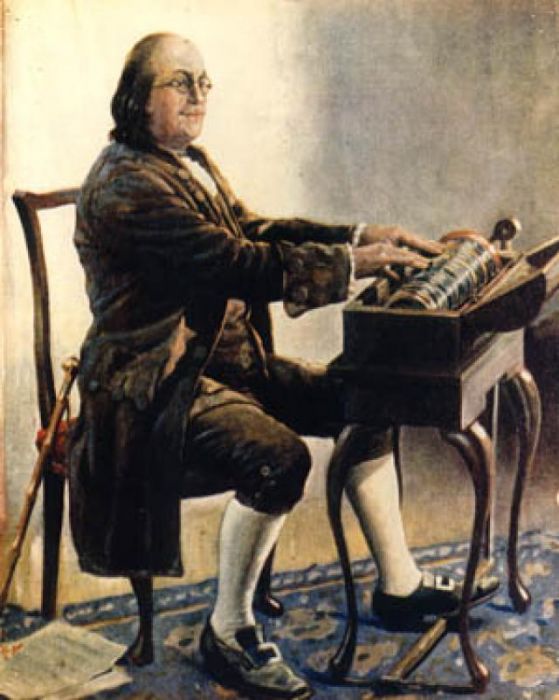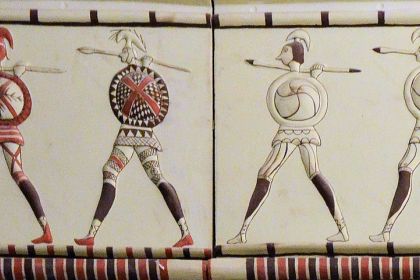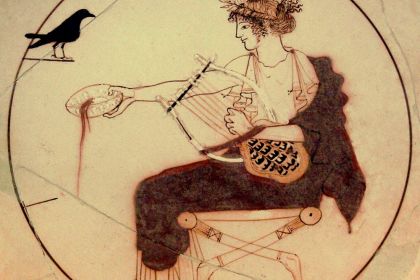ORCHESTRA
Mozart and Tom Waits wrote music for the glass armonica which was rumored to cause mental health damage

Glass Armonica by Robert Comploj
The glass armonica is one of many curious instruments that came into use with small ensembles during the transition from the Baroque to Classical period. Also known as the bowl organ, armonica struck listeners with its charmingly stretched sound that prompted over a hundred composers, including Mozart and Beethoven, to create music for the instrument.
One of the earliest mentions of the phenomenon of rubbing a wet finger around the rim of a wine goblet to produce tones was found in Two New Sciences written by Galileo in the Renaissance era, although there is evidence of metal singing bowls being used in religious ceremonies in China going as far back as two thousand years.
The first to play music on glass goblets was Richard Pockrich—an Irish musician who allegedly invented his angelic organ in 1741. Traveling throughout England, he quickly popularized the glass organ by performing both popular songs and works by prominent composers such as Handel.
It seems that Gluck was one the first composers to write music for the glass harp as evidenced by his Concerto on 26 drinking-glasses tuned with Springwater dating to 1746. The musical sound of glasses was so engaging that several inventors developed their instruments simultaneously, all based on the singing-glasses principle since a set of goblets was not very convenient for musical performance with ensemble.
The most successful model—in which glass bowls were strung on a metal rod revolving with a foot actuator—was designed by Benjamin Franklin in 1761.

Here is how Franklin described his device in a letter to his friend from Turin:
"The advantages of this instrument are, that its tones are incomparably sweet beyond those of any other; that they may be swelled and softened at pleasure by stronger or weaker pressures of the finger, and continued to any length; and that the instrument, being well tuned, never again wants tuning. In honour of your musical language, I have borrowed from it the name of this instrument, calling it the Armonica."
Musicologists agree that the most interesting composition for armonica is a quintet Adagio and Rondo for glass harmonica, flute, oboe, viola and cello written by Mozart for Marianne Kirchgessner—a blind virtuoso who played the work for the first time in 1791.
Listen to Mozart's Adagio & Rondo for glass harmonica in C minor:
The armonica did not last long and almost completely went out of fashion by the early Romantic era. Among the reasons of falling interest for the armonica, its low acoustic power might be at the top of the list, along with the instrument's cumbersome design, change of musical fashion, and strange rumors that using it caused both musicians and listeners to go mad.
Here is one example of dangerous effects caused by armonica music described by Johann Friedrich Rochlitz, a German playwright and musicologist:
"[The harmonica] excessively stimulates the nerves, plunges the player into a nagging depression and hence into a dark and melancholy mood, that is an apt method for slow self-annihilation."
At the moment, scientists have not identified either danger to human health in the sound of the armonica or the reasons why such music might negatively affect one's mental state. However, they found that the predominant pitch of the armonica is in the range of 1–4 kHz which makes it very difficult for humans to localize the acoustic object in the surrounding space, hence the auditory illusion the instrument creates with its sound seemingly coming from nowhere in particular. This effect could also be a good reference as to why Nepalese singing bowls are widely used during spiritual practices.
Like many forgotten musical instruments, the armonica was revived at the end of the 20th century when not only classical musicians brought back authentic sound to the works of the Classical era but popular artists began recording the glass armonica as well.
Listen to Tom Waits' Rainbirds where the armonica is used in the opening:




It's peculiar, isn't it, that it went out of fashion so quickly. Benjamin Franklin is right, sweet beyond compare. Gets under your skin, makes tears.